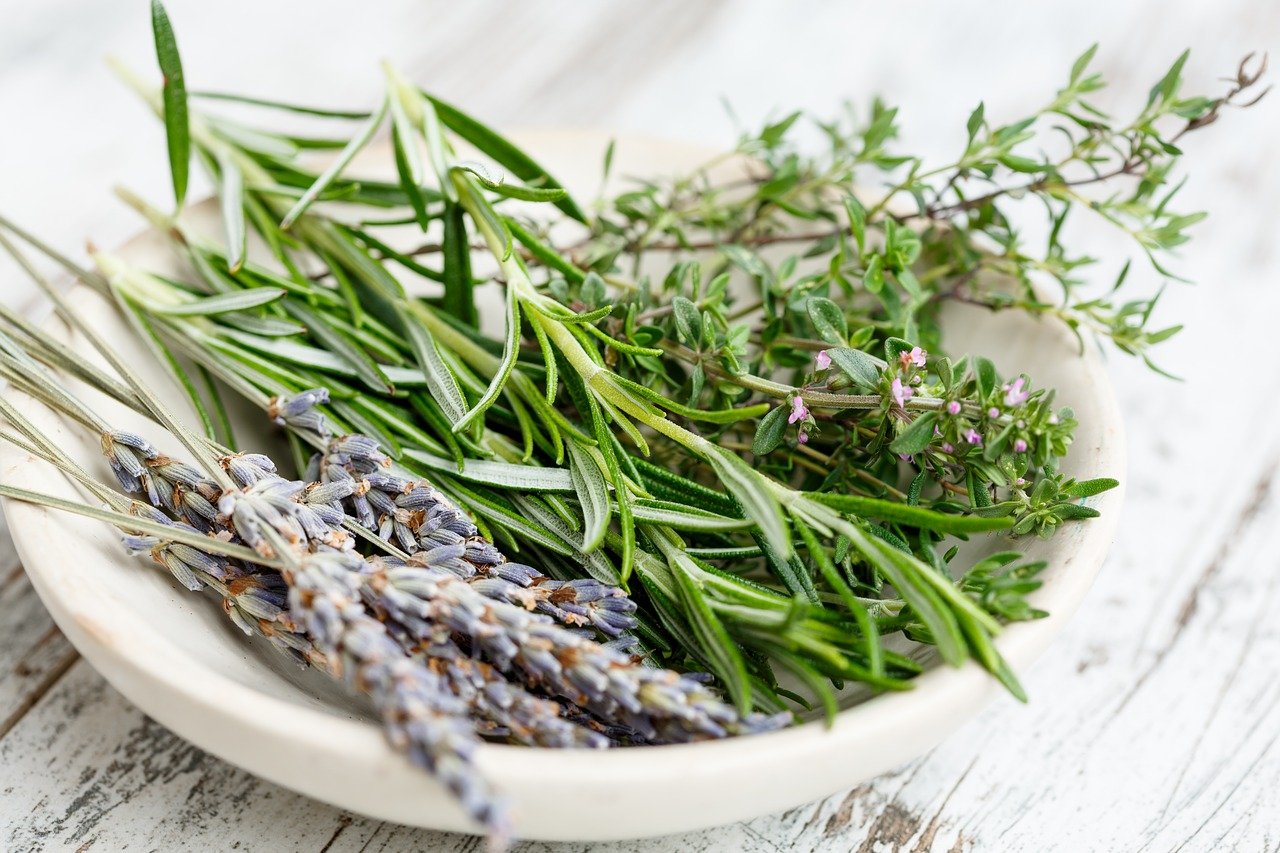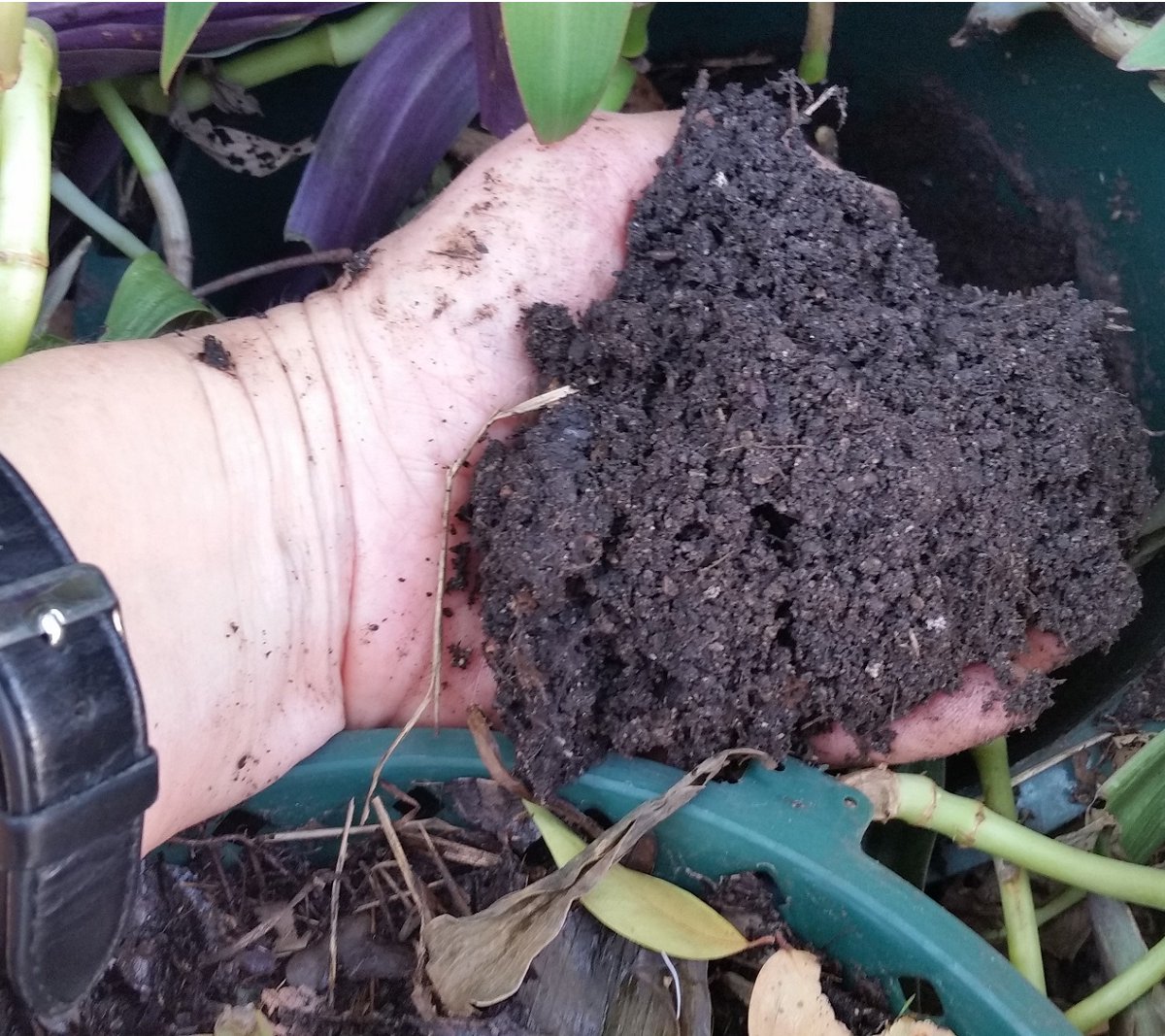Home>Gardening Basics>Getting Started>Why Are Weeds Good


Getting Started
Why Are Weeds Good
Published: December 17, 2023
Discover the benefits of weeds and how they can enhance your garden. Get started with weed management and transform your landscape.
(Many of the links in this article redirect to a specific reviewed product. Your purchase of these products through affiliate links helps to generate commission for Chicagolandgardening.com, at no extra cost. Learn more)
Table of Contents
Introduction
Why Are Weeds Good?
Weeds are often viewed as a nuisance, invading gardens, lawns, and agricultural fields. They are typically associated with negative connotations, such as competition with desired plants, and are often targeted for eradication. However, a closer look reveals that weeds play a crucial role in the ecosystem and offer various benefits that are often overlooked. Understanding the positive aspects of weeds can lead to a more balanced perspective and a deeper appreciation for these often-misunderstood plants.
Weeds are resilient and adaptable, thriving in diverse environments and challenging conditions. Their ability to flourish under adverse circumstances is a testament to their tenacity and survival skills. While they may be considered bothersome in certain contexts, weeds possess remarkable attributes that contribute to the overall health and functionality of ecosystems. Embracing a more holistic view of weeds can unveil their valuable contributions to the environment, agriculture, and human well-being.
Despite their reputation as unwanted intruders, weeds serve essential ecological functions that are worthy of recognition. By exploring the multifaceted benefits of weeds, we can gain a newfound understanding of their significance and the pivotal role they play in sustaining biodiversity and ecosystem dynamics. Let's delve into the remarkable advantages of weeds and uncover the compelling reasons why these resilient plants are, in fact, good for the environment and beyond.
Benefits of Weeds
Weeds, often dismissed as mere nuisances, offer a myriad of benefits that are integral to the balance and functionality of ecosystems. Understanding and appreciating these advantages can lead to a more harmonious coexistence with these resilient plants. Let’s explore the diverse benefits of weeds that extend beyond their perceived negative traits.
1. Soil Stabilizers: Weeds play a vital role in preventing soil erosion by anchoring the soil with their extensive root systems. This helps maintain the integrity of the soil structure, especially in areas where erosion is a concern. Additionally, their presence can enhance soil fertility by contributing organic matter through natural processes, ultimately benefiting the overall health of the soil.
2. Pollinators: Many weeds, often characterized by vibrant and abundant flowers, serve as crucial sources of nectar and pollen for pollinators such as bees, butterflies, and other beneficial insects. By providing essential forage for these pollinators, weeds contribute to the pollination of various plant species, thereby supporting biodiversity and ecosystem resilience.
3. Food Sources: Certain weeds are edible and nutritious, offering alternative food sources that have been utilized for centuries in various cultures. Embracing the culinary potential of these plants can broaden the spectrum of available food options and contribute to food security, especially in regions where traditional crops may face challenges.
4. Medicinal Plants: Several weeds possess medicinal properties and have been used in herbal remedies for their therapeutic benefits. Their potential as sources of natural healing compounds underscores their value in traditional and alternative medicine, offering potential solutions for various health conditions.
5. Indicators of Soil Health: Weeds can serve as indicators of specific soil conditions, providing valuable insights into soil quality, nutrient levels, and potential imbalances. Their presence or absence can convey essential information about the environment, guiding agricultural practices and land management decisions.
By recognizing these diverse benefits, we can cultivate a deeper appreciation for the significant role that weeds play in sustaining ecosystems and supporting human well-being. Embracing a more holistic perspective allows us to harness the potential of weeds in constructive and innovative ways, ultimately fostering a more sustainable and interconnected relationship with the natural world.
Weeds as Soil Stabilizers
Weeds serve as invaluable agents in stabilizing soil and preventing erosion, particularly in areas where the risk of soil degradation is prevalent. Their extensive root systems act as anchors, firmly securing the soil and mitigating the impact of water and wind erosion. This critical function is especially vital in regions vulnerable to soil loss, where weeds play a pivotal role in maintaining the integrity of the land.
One of the key mechanisms through which weeds contribute to soil stabilization is through their ability to enhance soil structure. By penetrating deep into the soil, weeds create a network of roots that bind the soil particles together, reducing the likelihood of erosion and promoting soil cohesion. This process not only safeguards the topsoil but also facilitates the absorption of water, thereby aiding in moisture retention and supporting overall soil health.
Moreover, the organic matter generated by weeds through natural processes contributes to the improvement of soil fertility. As weeds decompose, they enrich the soil with essential nutrients, enhancing its productivity and bolstering the growth of other plant species. This organic enrichment is a testament to the constructive role that weeds play in nurturing the soil, fostering a more conducive environment for diverse flora and promoting sustainable land management practices.
Furthermore, the presence of weeds can act as a protective layer, shielding the soil from the impact of heavy rainfall and strong winds. By creating a natural barrier, weeds reduce the force of erosive agents and minimize the risk of soil displacement, thereby safeguarding the delicate balance of the ecosystem.
By recognizing the significant role of weeds as soil stabilizers, we can cultivate a deeper appreciation for their contribution to soil conservation and land preservation. Embracing their inherent capacity to fortify the soil and mitigate erosion empowers us to leverage their natural attributes in sustainable land management practices, ultimately fostering a more resilient and balanced environment.
Weeds as Pollinators
Weeds, often adorned with vibrant and abundant flowers, play a crucial role in supporting pollinators and enhancing biodiversity within ecosystems. Their blossoms serve as essential sources of nectar and pollen, attracting a diverse array of pollinating insects such as bees, butterflies, and other beneficial species. By providing vital forage for these pollinators, weeds contribute significantly to the pollination of various plant species, ultimately fostering a rich tapestry of flora and sustaining ecosystem resilience.
The presence of weeds as nectar and pollen sources is particularly significant in environments where traditional flowering plants may be scarce or face challenges. Weeds, with their adaptive nature and resilience, often thrive in diverse habitats, filling ecological gaps and providing critical sustenance for pollinators throughout different seasons. This continuous availability of floral resources is instrumental in supporting the life cycles of pollinating insects, ensuring their well-being and contributing to the pollination of a wide spectrum of plants.
Furthermore, the diverse array of weed species offers a mosaic of flowering periods, extending the duration of floral resources for pollinators. This prolonged availability of nectar and pollen is essential for sustaining pollinator populations, especially in areas where floral abundance may fluctuate due to seasonal variations or environmental factors.
By fostering a hospitable environment for pollinators, weeds contribute to the intricate web of interactions within ecosystems, promoting the reproduction and genetic diversity of plant species. The pollination services facilitated by weeds have far-reaching implications, influencing the productivity of agricultural crops, the regeneration of natural habitats, and the overall stability of ecosystems.
Recognizing the pivotal role of weeds as providers of essential floral resources for pollinators underscores their significance in supporting biodiversity and ecosystem function. Embracing the diverse contributions of weeds to pollinator populations highlights their integral role in sustaining the intricate balance of nature and underscores the importance of preserving their presence within the ecological tapestry.
Weeds as Food Sources
Contrary to their conventional portrayal as unwanted intruders, certain weed species offer valuable nutritional benefits and have served as traditional food sources in various cultures for centuries. Embracing the culinary potential of weeds not only expands the spectrum of available food options but also contributes to food security, especially in regions where traditional crops may face challenges due to environmental conditions or resource limitations.
Many weeds boast exceptional nutritional profiles, containing an array of vitamins, minerals, and phytonutrients. Their adaptability and resilience enable them to thrive in diverse environments, often yielding abundant harvests even in less hospitable conditions. This resilience underscores the potential of weeds to supplement dietary requirements and offer sustenance in regions where conventional crops may struggle to flourish.
Furthermore, the incorporation of weeds into culinary practices can enrich the diversity of local diets, offering unique flavors and textures that contribute to the richness of culinary traditions. By embracing the edible potential of weeds, communities can tap into a reservoir of sustainable and readily available food resources, fostering a deeper connection with the natural environment and promoting self-sufficiency.
Exploring the culinary versatility of weeds can also inspire innovative culinary creations and culinary traditions, offering opportunities for culinary experimentation and the development of novel recipes. By harnessing the culinary potential of weeds, individuals and communities can cultivate a deeper appreciation for the abundance of nature and the diverse array of edible plants that thrive in their surroundings.
Moreover, the utilization of weeds as food sources aligns with principles of sustainability, as it harnesses the inherent resilience of these plants and minimizes reliance on resource-intensive agricultural practices. By integrating weeds into culinary practices, communities can embrace a more holistic approach to food production and consumption, promoting the utilization of locally available resources and reducing the ecological footprint associated with food cultivation.
Recognizing the nutritional value and culinary potential of weeds sheds light on their role as alternative food sources, offering opportunities to diversify diets, enhance food security, and celebrate the culinary heritage of these resilient plants.
Weeds as Medicinal Plants
Amidst their often-overlooked attributes, certain weed species harbor potent medicinal properties and have been utilized in traditional herbal remedies for their therapeutic benefits. The rich pharmacological potential of these resilient plants underscores their significance in traditional and alternative medicine, offering a diverse array of natural healing compounds that have been harnessed for centuries to address various health conditions.
Many weeds contain bioactive compounds that exhibit remarkable medicinal properties, ranging from anti-inflammatory and antimicrobial effects to potential analgesic and antioxidant properties. These bioactive constituents have been the focus of traditional herbal medicine, where weeds have been employed to alleviate ailments and support overall well-being.
Furthermore, the accessibility and abundance of many weed species make them valuable resources for communities seeking natural remedies. Their resilience allows them to thrive in diverse environments, often presenting readily available sources of medicinal plants that can be harvested sustainably and utilized to address a multitude of health concerns.
The utilization of weeds as medicinal plants also aligns with the principles of holistic and integrative medicine, offering a complementary approach to conventional healthcare practices. By incorporating the therapeutic potential of weeds into healthcare traditions, communities can tap into a wealth of natural remedies that have been passed down through generations, fostering a deeper connection with the healing properties of the natural world.
Moreover, the exploration of weeds as medicinal plants presents opportunities for scientific inquiry and the discovery of novel bioactive compounds with potential pharmaceutical applications. The study of weeds for their medicinal properties holds promise for uncovering new sources of therapeutic agents, contributing to the advancement of pharmaceutical research and the development of innovative healthcare solutions.
Recognizing the medicinal potential of weeds underscores their role as valuable contributors to traditional medicine and the broader landscape of healthcare. Embracing their therapeutic attributes offers opportunities to explore the diverse array of natural remedies that thrive in the environment, promoting a deeper understanding of the healing properties of these resilient plants.
Weeds as Indicators of Soil Health
Weeds serve as insightful indicators of soil health, offering valuable cues about the condition and fertility of the land. Their presence, distribution, and behavior within ecosystems convey essential information about soil quality, nutrient levels, and potential imbalances, serving as dynamic indicators that guide agricultural practices and land management decisions.
One of the key roles of weeds as indicators of soil health lies in their adaptive nature and responsiveness to specific soil conditions. Certain weed species thrive in environments with distinct pH levels, nutrient compositions, or moisture regimes, reflecting the unique characteristics of the soil in which they flourish. By observing the prevalence and diversity of weeds within a given area, agricultural practitioners and ecologists can glean insights into the soil’s properties and identify areas that may require targeted interventions or management strategies.
Furthermore, the presence of specific weed species can offer indications of soil nutrient levels and potential deficiencies. Certain weeds are known to thrive in soils with particular nutrient compositions, providing clues about the soil’s fertility and the availability of essential elements. By assessing the weed species present in a given area, farmers and land managers can gain valuable insights into the soil’s nutrient status, informing decisions related to fertilization practices and soil amendments.
Additionally, the behavior of weeds, such as their growth patterns and competitive interactions, can reveal underlying soil conditions and potential challenges. Weed infestations in specific areas may signal underlying soil compaction, moisture imbalances, or other factors that influence plant growth. By interpreting the dynamics of weed populations, practitioners can identify areas for targeted soil improvement efforts and implement tailored strategies to enhance soil health and productivity.
Moreover, the resilience of weeds allows them to thrive in disturbed or degraded environments, making their presence a potential indicator of soil degradation and erosion. Observing the prevalence of weeds in areas susceptible to erosion or land degradation can prompt proactive measures to address soil erosion, restore ecological balance, and preserve the integrity of the land.
By recognizing the role of weeds as indicators of soil health, practitioners can harness the valuable insights offered by these resilient plants to inform sustainable land management practices, promote soil conservation, and cultivate environments that support the vitality and productivity of the land.
Conclusion
Throughout history, weeds have often been marginalized and overlooked, viewed primarily as unwelcome intruders in cultivated landscapes. However, a deeper exploration of their multifaceted contributions reveals a tapestry of benefits that extend far beyond their perceived negative traits. Weeds, with their resilience and adaptability, play integral roles in supporting ecosystem dynamics, promoting biodiversity, and offering valuable resources with diverse applications.
From serving as soil stabilizers that safeguard the land from erosion to providing essential floral resources that support pollinators, weeds weave themselves into the intricate fabric of ecosystems, contributing to the resilience and functionality of natural landscapes. Their potential as alternative food sources and medicinal plants underscores their capacity to offer sustenance and healing, enriching the spectrum of available resources for human well-being.
Moreover, the presence of weeds as indicators of soil health offers valuable insights that guide sustainable land management practices, informing decisions that promote soil conservation and fertility. By recognizing the diverse benefits of weeds and embracing a more holistic perspective, we can cultivate a deeper appreciation for the resilience and contributions of these often-misunderstood plants.
Embracing the inherent value of weeds invites us to reimagine our relationship with these resilient plants, fostering a more harmonious coexistence that acknowledges their vital roles within the intricate web of life. By nurturing a deeper understanding of the benefits of weeds, we can harness their potential in constructive and innovative ways, ultimately fostering a more sustainable and interconnected relationship with the natural world.
As we continue to explore the complex interplay between weeds and the environment, it becomes increasingly evident that their contributions are integral to the balance and functionality of ecosystems. By celebrating the diverse benefits of weeds, we honor their resilience and recognize their capacity to enrich and sustain the intricate tapestry of life on our planet.







